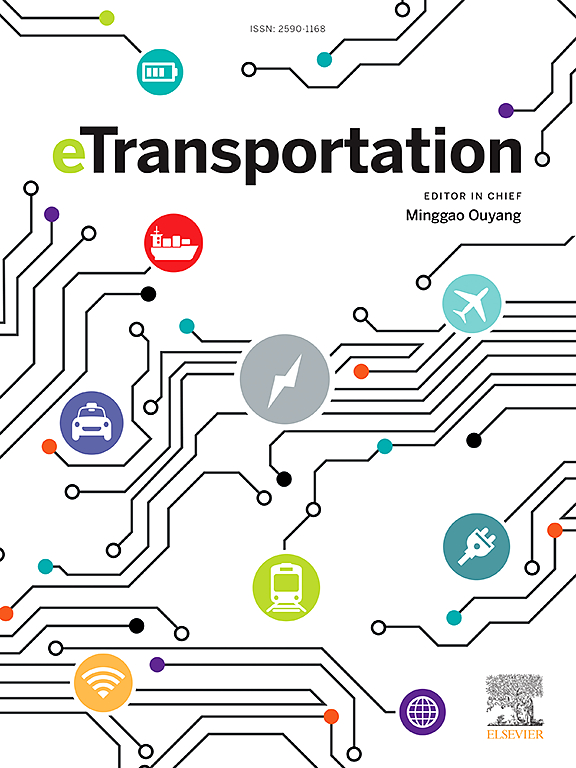Electric vehicle charging flexibility assessment for load shifting based on real-world charging pattern identification
IF 15
1区 工程技术
Q1 ENERGY & FUELS
引用次数: 0
Abstract
Coordinated charging control for electric vehicles (EVs) can contribute to load balancing and renewable energy utilization. This paper proposes a novel framework for assessing the flexibility of EVs under different charging control strategies through a rule-based identification of charging patterns. First, key categories of EV charging activity chains, characterized by the sequence of parking and charging activities between adjacent trips, are extracted from real-world EV operation data. Simulations are then conducted by switching charging patterns to represent three coordinated charging control methods: delayed charging, reduced-power charging, and smart charging with Time-of-Use (ToU) tariffs. These strategies are applied by modifying the charging time or charging rate within the original charging sessions. Several evaluation metrics are introduced to quantify each strategy's impact on load profile reshaping, flexibility utilization efficiency, user involvement, and energy cost saving. Comparison results show that smart charging with ToU tariffs outperforms the other two strategies, though the effectiveness of each scheme varies with charging patterns. The findings highlight the idle parking time and its ratio to the required charging time as key indicators for identifying potential EV users for coordinated charging control. Additionally, it is shown that shifting 1 % of EV charging load out of peak periods requires at least 4 % of user participation, while at least 3 % is needed for shifting 1 % of EV charging load into valley periods. The proposed pattern-based charging model and evaluation framework offer valuable insights for designing more efficient, cost-effective, and user-friendly EV charging scheduling strategies.

基于真实充电模式识别的负荷转移电动汽车充电灵活性评估
电动汽车协调充电控制有助于实现负载均衡和可再生能源利用。本文提出了一种新的框架,通过基于规则的充电模式识别来评估不同充电控制策略下电动汽车的灵活性。首先,从现实世界的电动汽车运行数据中提取电动汽车充电活动链的关键类别,以相邻行程之间的停车和充电活动顺序为特征;然后,通过切换充电模式进行仿真,代表了三种协调的充电控制方法:延迟充电、减少功率充电和使用时间(ToU)关税的智能充电。这些策略通过在原始充电会话中修改充电时间或充电速率来实现。介绍了几个评估指标来量化每种策略对负载轮廓重塑、灵活性利用效率、用户参与和能源成本节约的影响。对比结果表明,采用分时电价的智能充电策略优于其他两种策略,尽管每种方案的有效性因收费模式而异。研究结果表明,闲置停车时间及其与所需充电时间的比值是识别潜在电动汽车用户进行协调充电控制的关键指标。此外,研究表明,将1%的电动汽车充电负荷从高峰时段转移出去,至少需要4%的用户参与,而将1%的电动汽车充电负荷转移到低谷期,至少需要3%的用户参与。所提出的基于模式的充电模型和评估框架为设计更高效、更具成本效益和用户友好的电动汽车充电调度策略提供了有价值的见解。
本文章由计算机程序翻译,如有差异,请以英文原文为准。
求助全文
约1分钟内获得全文
求助全文
来源期刊

Etransportation
Engineering-Automotive Engineering
CiteScore
19.80
自引率
12.60%
发文量
57
审稿时长
39 days
期刊介绍:
eTransportation is a scholarly journal that aims to advance knowledge in the field of electric transportation. It focuses on all modes of transportation that utilize electricity as their primary source of energy, including electric vehicles, trains, ships, and aircraft. The journal covers all stages of research, development, and testing of new technologies, systems, and devices related to electrical transportation.
The journal welcomes the use of simulation and analysis tools at the system, transport, or device level. Its primary emphasis is on the study of the electrical and electronic aspects of transportation systems. However, it also considers research on mechanical parts or subsystems of vehicles if there is a clear interaction with electrical or electronic equipment.
Please note that this journal excludes other aspects such as sociological, political, regulatory, or environmental factors from its scope.
 求助内容:
求助内容: 应助结果提醒方式:
应助结果提醒方式:


